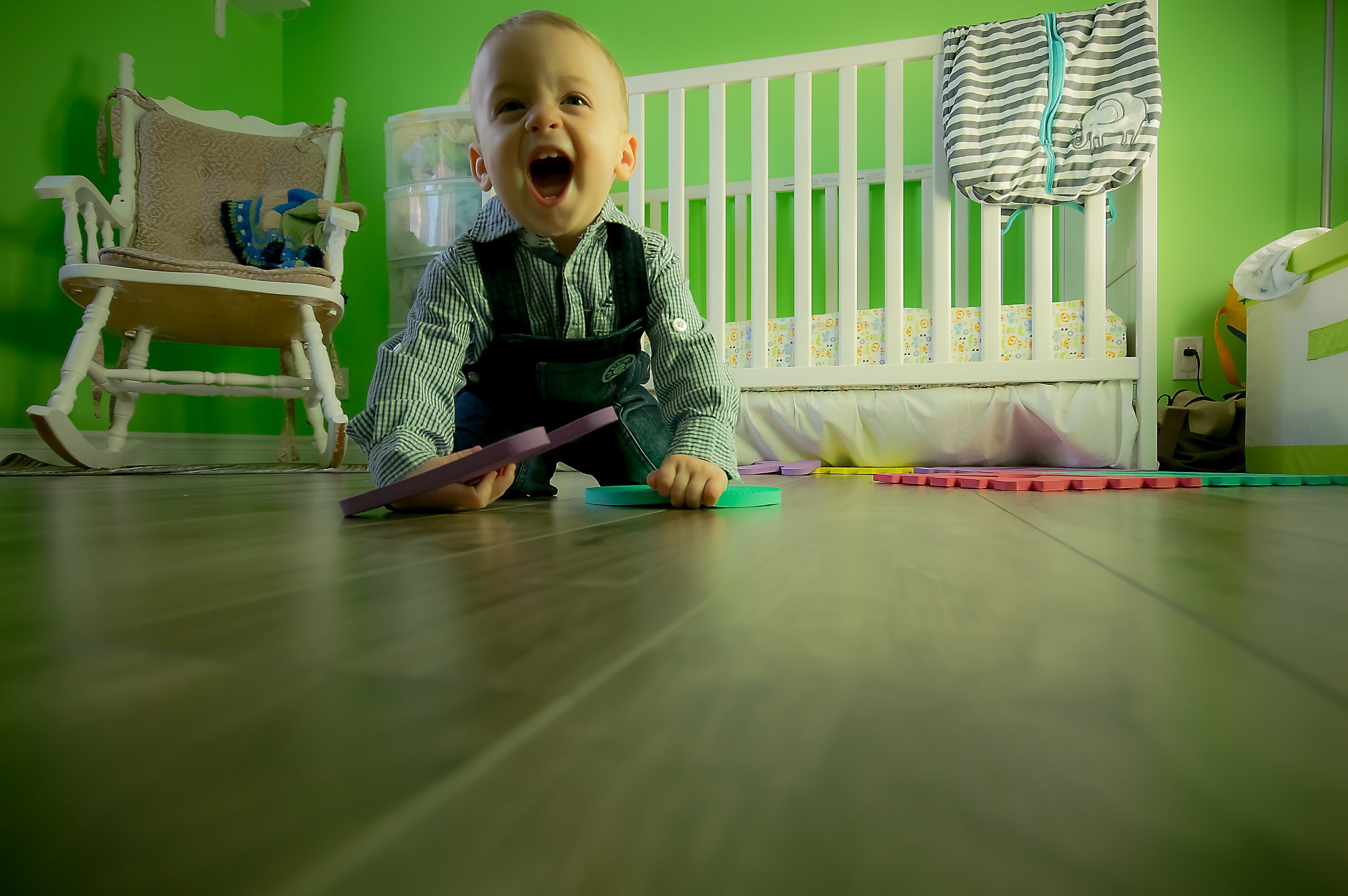New parents, in particular, can benefit from the calming, sophisticated, and stylish atmosphere that minimalism can provide to their homes, but there are some items that should never be eliminated. This post is for you if you've been seeking ways to reduce the amount of baby gear you need without worrying that your child will be uncomfortable or unhappy without it. You probably sat down several months before the birth of your child and wrote a detailed list of all the things you believed you'd need for the first year of your child's life. Probably not giving it much consideration, but you probably included a playpen in your list of things to buy. We wrote this piece to counter the widely held yet mistaken belief that having access to a playpen is inherently problematic.
Playpens are widely used by parents for a variety of reasons. The primary reason is to ensure the baby's safety, such as by keeping him or her away from the family dog or an older sibling. The second is to keep the infant occupied in a safe environment.
The third most common function of a playpen is to help parents get some shut eye. On the go, playpens double as temporary cribs for infants.
The playpen used to be an everyday fixture in the lives of most families with small children. If you ask around, you'll find that many of your ancestors probably not only utilised one but did so without giving any thought to the pros and cons. Similar to the pram and the highchair, the playpen was a must-have for parents.
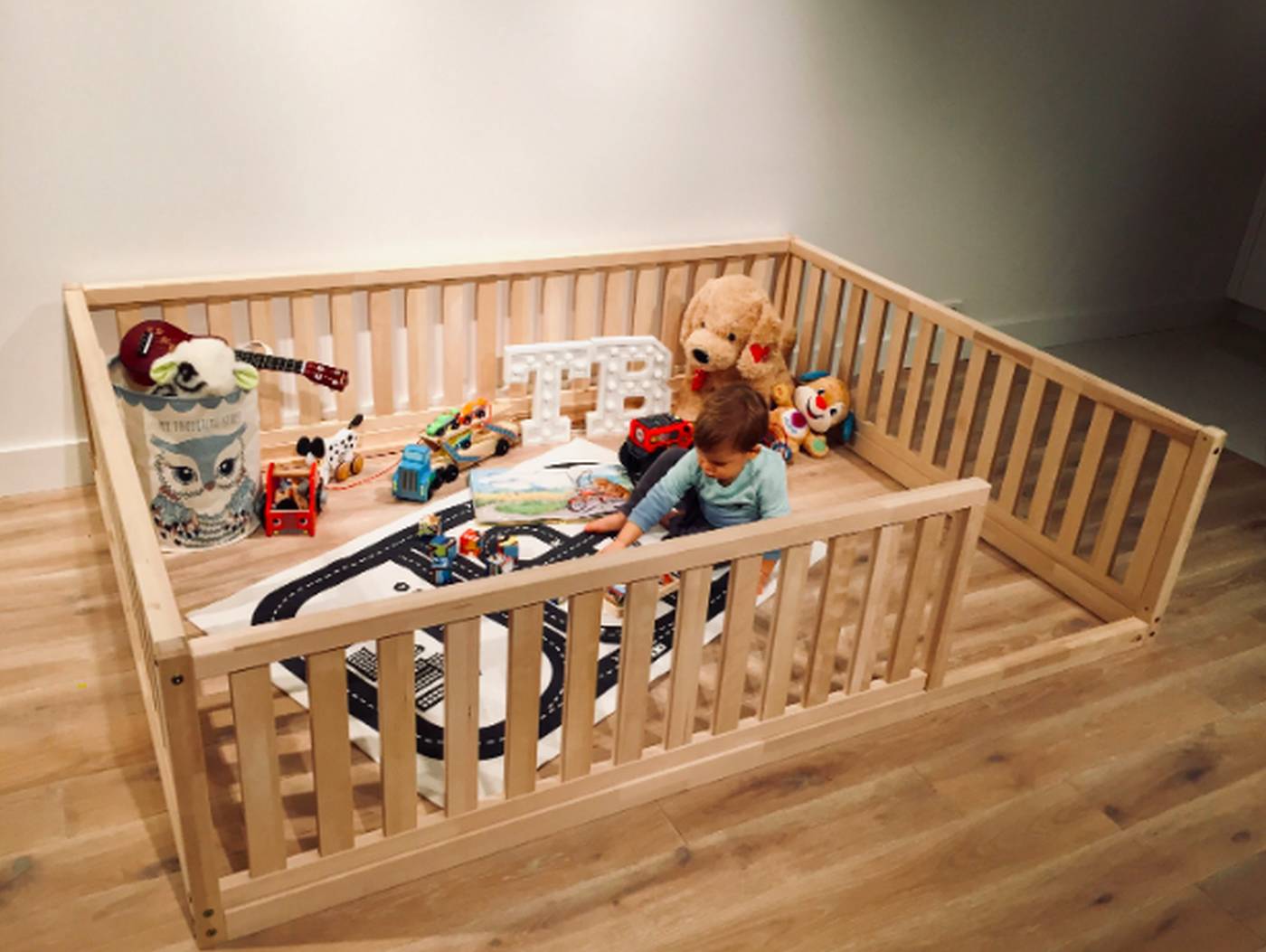
However, a playpen is rarely seen in homes these days. Those who do resort to them frequently laugh awkwardly about "locking their baby away" to protect themselves from others' judgement. Parents are always debating the benefits and drawbacks of playpens and seeking advice from other parents on online discussion boards. There is a widespread belief that parents who utilise a playpen are being judged negatively by those who do not.
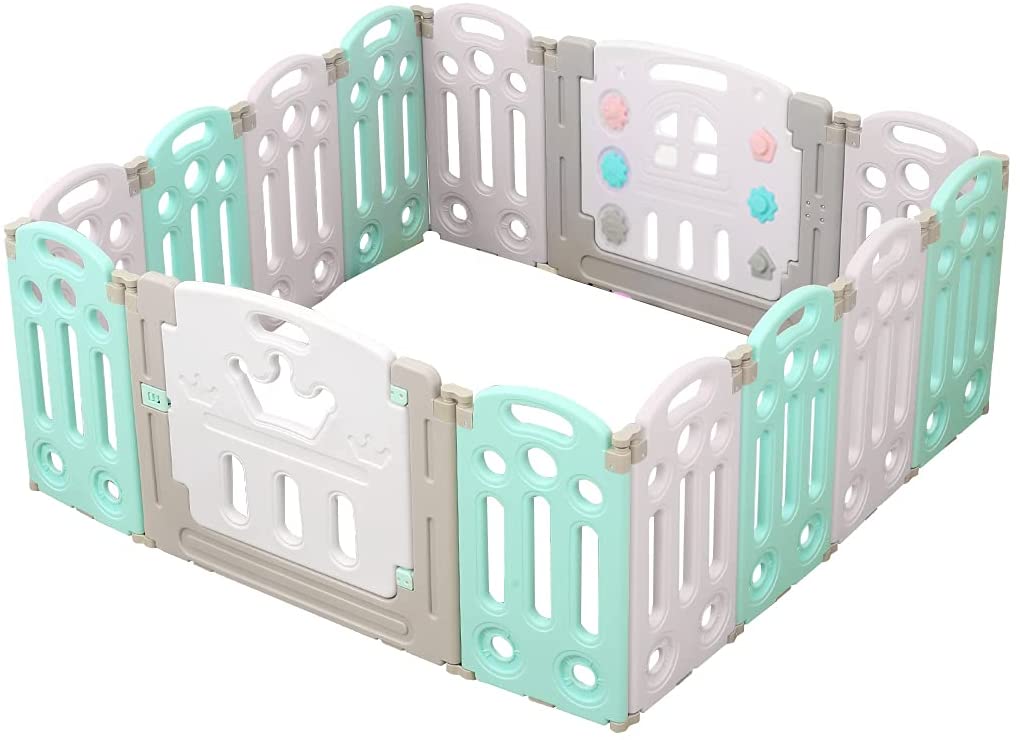
BoPeep Kids
Playpen Baby Safety Gates Kid Play Pen Toddler Fence Room 14 Panels
Create an ideal imaginative play area for your beloved growing children with the help of the BoPeep Kids Baby Foldable Playpen.
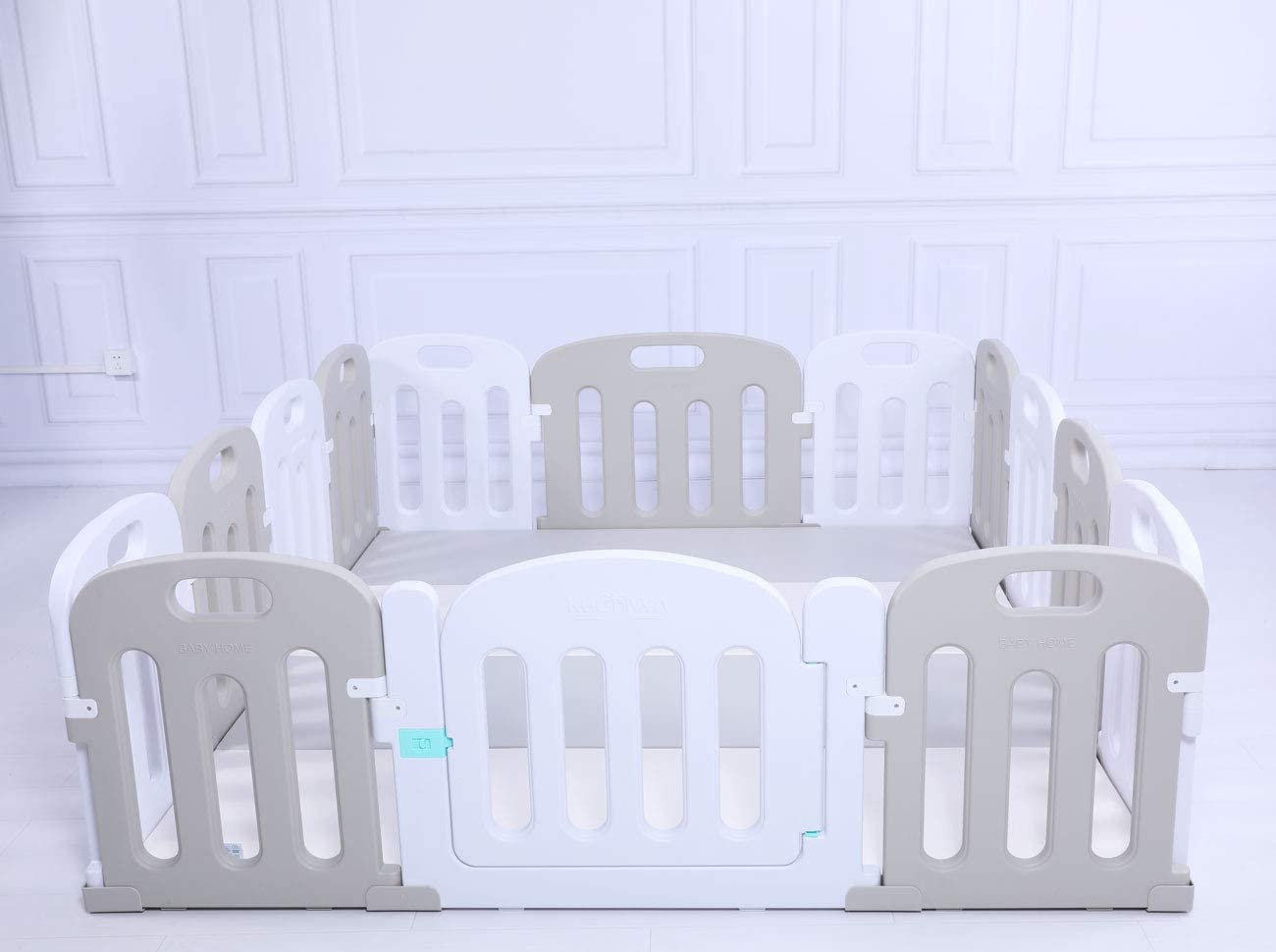
AU Choice
Premium Quality Baby Kids Playpen Toddler Baby Safety Gate + Slide + Play Mat Options Home Indoor Playroom
The Premium Quality Baby Kids Playden combines safety and durability as your baby’s first discovery centre. It features a height that's perfect for children to stand up and walk around, while the area inside is plenty of room for them to play and explore. The anti-clipping design of the junction will ensure that your child can't get stuck by the product, either.
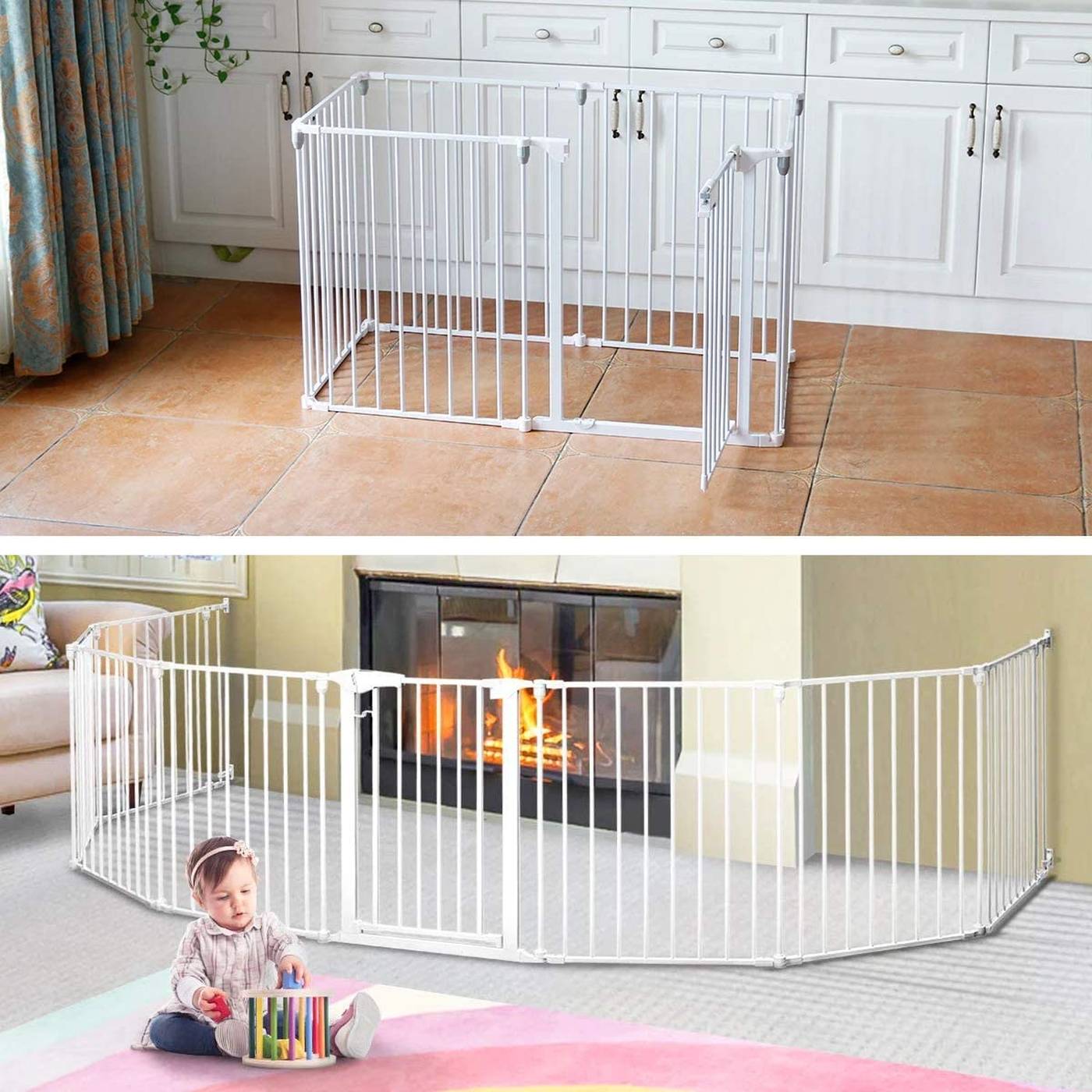
Yozzi
3-in-1 Super Wide Adjustable Baby Safety Gate and Play Yard Pet Playpen
This is no ordinary baby gate. We know you want safety that won't compromise the look of your home or allow critters in. The package comes with the necessary mounting hardware to keep climbing children at bay while allowing easy access for you and your guests. The one-hand release latch will have them out-of-the-way in seconds when the company arrives so foot traffic can flow right through - no awkward balancing act to disable the barrier during a potty break needed here either.
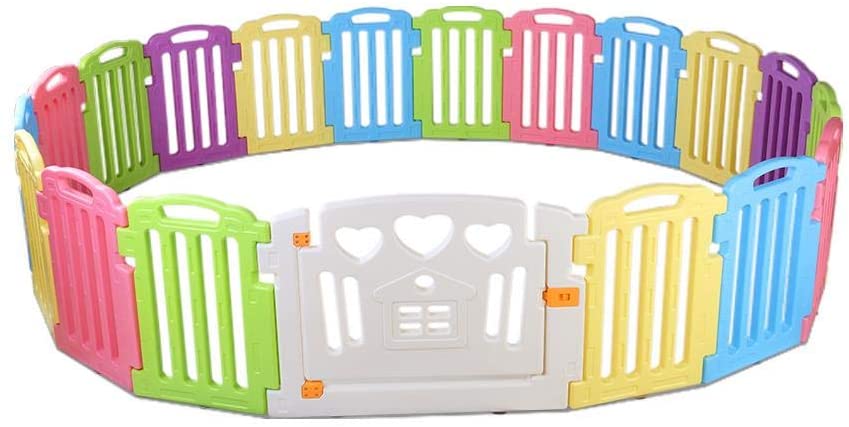
cuddly baby
19-Panel Plastic Baby Playpen with Interactive Safety Gate for Kids Toddler
You can finally breathe a sigh of relief as you keep your baby safe and sound without worrying about anything coming in contact with their skin! This Cuddly Baby Playpen has everything to make playing and learning more enjoyable for kids: 19 panels, safety joints, interactive safety gate and door lock, plenty of toys – the list goes on. Take advantage of this amazing opportunity before someone else does!
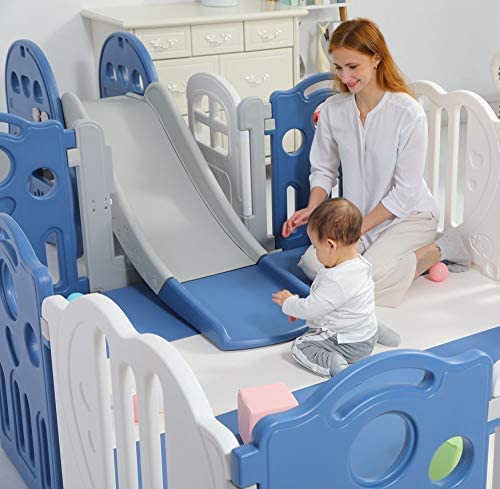
AU Choice
Premium Quality 148x173cm Kids Baby Playpen Options Toddler Baby Safety Gate Room Home Indoor
The Premium Quality Baby Kids Playpen is the best play area for your little adventurers in the home. The rubber base keeps it sturdy,65cm high panels are perfect for children learning to stand and walk,the safety lock on it ensures parents’ peace of mind when they face hands full with life. Come take a look at this sweet baby pen!

Timsolo
Baby Playpen Kids Toddler Plastic 14 Panel Interactive Safety Gate Divider Lock
We all live in busy lives that constrain us from spending much time with our babies. With the installation of this playpen, pat yourself on the back for providing your baby with their own personal minibox! The Playpens are easy to assemble and light-weighted; you'll be donning it in seconds within a minute or so after unpacking. It can brightly decorate up any area where it is installed, making things more fun for both adults and children alike.
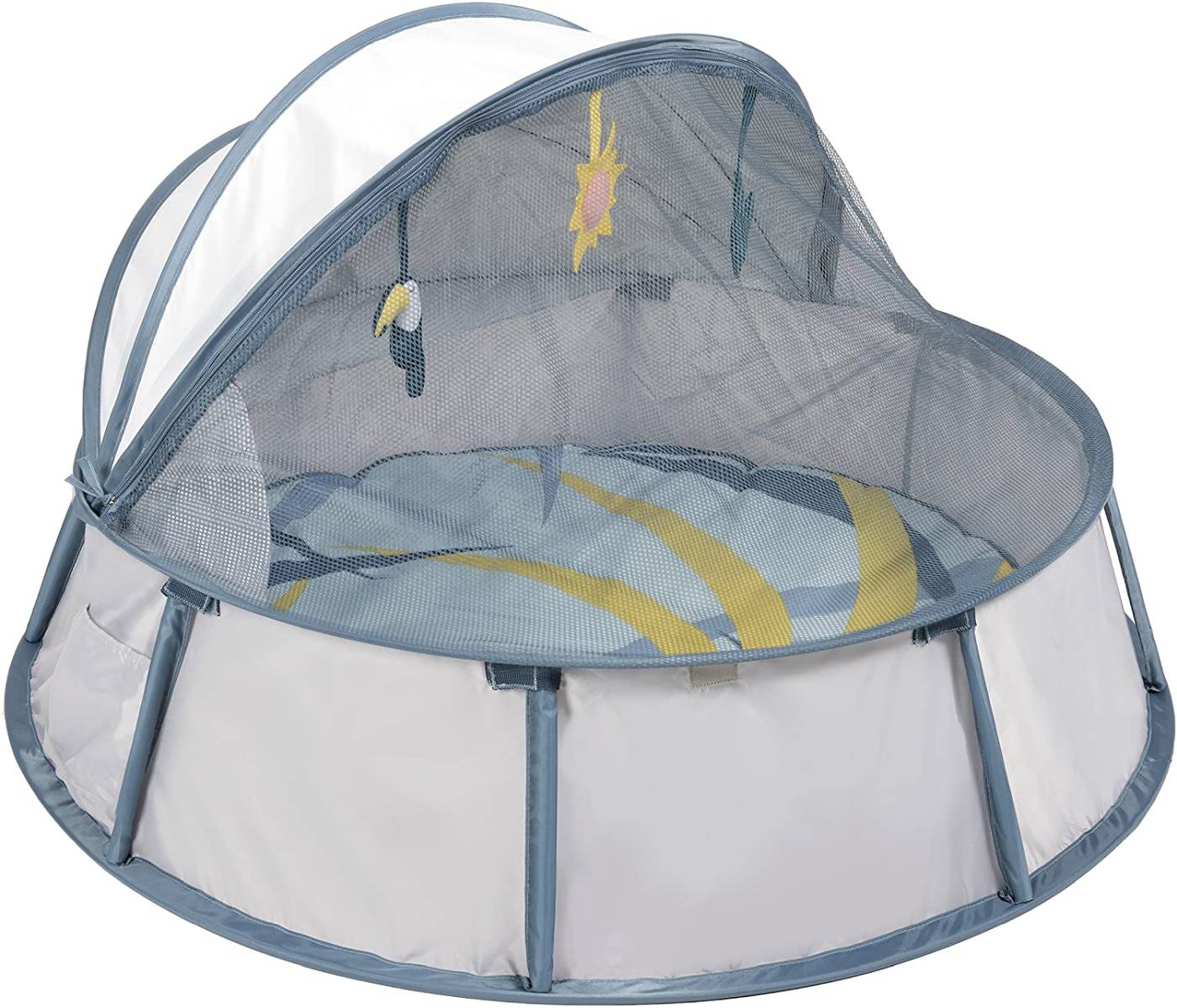
Babymoove
Babymoov Babyni Playpen, Activity Gym & Napper with Pop-Up System
With this playpen baby can enjoy the outdoors without any of the harshness. With UV protection, sand-proof canopy and a mosquito net, your child will be comfortable while you relax by the sea!
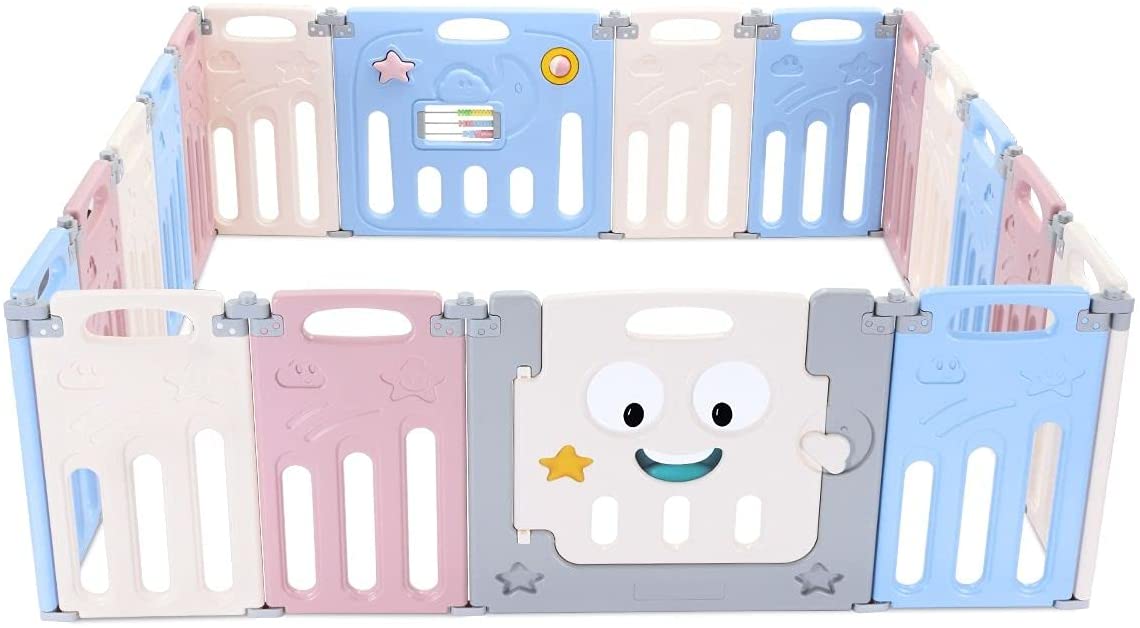
AUSWY
Baby Playpen ABST 18 Panel Safety Gate
The AUSWY Playpen is a welcoming place for babies to grow and learn. It's designed with safety, durability, and creativity in mind, so that parents can rest easy knowing their child is playing in comfort. Get ready for boundless fun with the 18 Panel Design- you'll be able to create any play space your imagination desires!
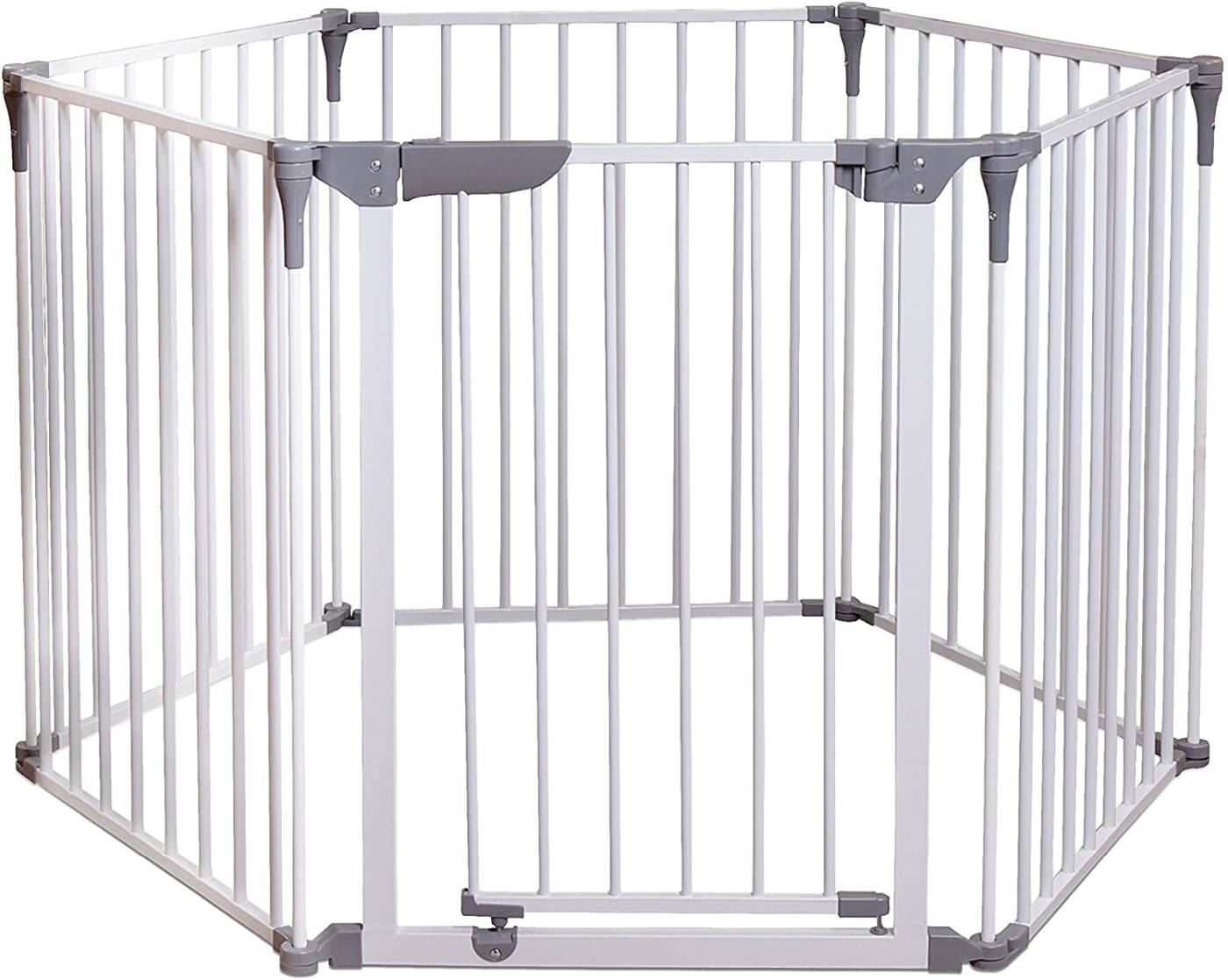
Dreambaby
Royale 3-in-1 Converta Play-Pen Gate
Whenever you want to keep your kids in one place but want them to have some space, this multi-purpose play pen is the answer. Six panels create a gate that surrounds more of your room - not just an area of rug or carpet. One side works as a convenient walkthrough door! The sturdy metal construction will last for years and doesn't need tools for assembly. Give indoor spaces without yard access the same functionality of outdoor yards with this convertible playpen.
Baby Development And Playpens
There are several websites and online discussions that claim "studies" show that putting babies in playpens will harm their development and their ability to learn. However, not one of these references actually cites a legitimate or reliable resource. A professor of psychology at the University of California, Berkeley, and author of the book The Philosophical Baby named Alison Gopnik claims that there has been no systematic research to back up these claims. We think people get confused because it's so crucial to a baby's development to give them plenty of time to roam around and discover their surroundings. It's true that this statement is accurate, but it's not meant as criticism of parents who utilise playpens with their children.
Striking A Balance
When it comes to the resources we are given, as with so many other things in life, it's best not to waste them. There is no harm in owning or utilising a playpen, but keeping your child confined to the playpen for long periods of time is neither healthy nor acceptable. The time your child needs to learn about the world around them will be severely limited if you do this. That being stated, we thought it would be helpful to discuss the proper use of playpens and how they may benefit your family.
A Playpen's Benefits Can Include:
- A playpen is a great way to keep your child secure while you attend to more pressing matters, such as using the restroom, preparing supper, or taking an essential phone call.
- Many playpen options available today can serve multiple purposes. Most can be folded or broken down flat for transport, and their versatility means they can be used as a baby gate or changing station, among other things. Finding multi-purpose equipment is the way to go if you're trying to reduce the number of products you need.
- Your child will benefit greatly from having his or her own dedicated play space, such a playpen, in your home.
Four To Six Months
A playpen is not an appropriate place for a newborn.
The distance between a newborn in a playpen and an adult's face is too much for the adult to offer the necessary stimulation. Also, infants can't get about enough in a playpen to keep themselves occupied.
You shouldn't put your baby in a playpen until she can turn over, grab a toy, and hold her head up. To ensure she is comfortable with the playpen when you start using it regularly, you should introduce her to it no later than four months of age. She may grow up to be too fearful of the new environment to ever feel secure there if you make her wait.
Six To Eight Months
A playpen is very useful during this stage. Most infants this age are able to sit up and grip at objects within reach.
As long as you are close by, it's safe to leave a baby of this age in a playpen for brief periods of time.
Babies of this age enjoy brand new toys, so don't forget to give him some when you put him in the playpen. Do not attempt to attach toys to the playpen's sides or top, as babies can choke on the wires or strings.
Eight To Ten Months
Your kid is probably beginning to crawl and even pull herself up by this point. This could explain why she seems to be growing increasingly restless in her playpen.
If you don't move her out of the playpen, she may get up and start crying because she wants to go on a walk. To keep her happy while she's in her playpen, provide her with some novel playthings. Once your baby can walk effectively, she will likely protest loudly if you try to confine her to a confined space, so you will likely have to cease using the playpen.
How A Playpen Can Be Useful To You And Your Family
All these worries about restricting your child's capacity to explore, move about, and play are presented in extremes, with children either being left in tiny playpens all day or never having their freedom of mobility restricted. One forum member asserts that putting a child in a playpen will result in "neurological disorganisation," and compares playpen users to parents who "chained children to bedposts or confined them in closets," causing the children to be "idiots [who] only grew to half of their normal size." This absurd analogy encourages parents to take the opposite extreme and refuse to let their children play in huge, enclosed spaces with toys for fear of being seen as abusive to youngsters.
When we put our kids in a stroller, car seat, high chair, or fenced-in playground, we don't seem to give a second thought to the potential harm we're causing them. When used moderately, we don't see any problem with including a medium to big playpen as part of the arsenal of tools we employ to keep our children safe and make daily life easier. Keeping a child in a playpen all day is unacceptable. Keeping a youngster in a stroller all day is unacceptable. It's a huge relief to have somewhere secure to leave your child while you take a shower, hang out the laundry, answer the door, or do anything else that requires your undivided attention but does not necessitate your constant presence. If you've been letting your kid play in the playpen from an early age, they're more likely to like spending time in there (as long as you don't use it as a punishment).
Your kid will be just as unharmed if you occasionally restrict their movement when walking to the stores, or driving to a park, and other times allow them more freedom to explore without confinement. Instead of dividing your attention throughout the day, you could get the bulk of the chores done in one sitting and then devote your full attention to your child later. Your child will develop social, emotional, and motor abilities, as well as an increased comfort level while you are not around, through time spent engaged in independent play.
Check out our range of baby playpens at My Baby Nursery.
Is It Ok For Our Baby To Use A Playpen?
It's strange that we're fine with securing a wiggly infant in a car seat, stroller, or backpack, but we would baulk at the idea of putting them in a playpen.
There was a time when playpens were as commonplace as high chairs for infants. Parents blindly placed their babies in them, ignoring any potential risks. Experts in child development were beginning to fret that babies confined to playpens weren't getting enough attention or stimulation from their carers since they weren't free to explore their surroundings. Expert worries were misinterpreted as "Never put a baby in a playpen," rather than "Don't keep your infant cooped up all day," as is so often the case when fresh advice is offered to parents.
Some babies do need to be herded at times, as anybody who has tried to answer the phone while a fast-crawling baby is racing to eat the dog's food can attest.
A playpen is a popular choice since it provides a baby with a safe space where he can still keep an eye on the family's goings-on. There are a lot of foldable playpens that are easy to transport from one space to another. If you need to leave your infant unattended for short periods of time, a playpen is another option. An occasional snooze here might be helpful, although some infants may become confused if they find themselves occupying the same space as their playtime activities.
Your baby's ability to learn is not hindered any more by keeping him or her in a playpen at home than it would be by pushing them around in a stroller, but you wouldn't let him or her explore the market floor unattended, would you?
It's best to start utilising a playpen as soon as possible, preferably before your baby starts crawling. A baby who is not yet crawling or pulling himself up is more likely to be cooperative than one who waits until he or she is older. Just as he's discovering the thrill of being pursued, you'd confine him to an area where he can't move freely. If he has positive associations with the playpen, he probably won't mind being confined to it.
A small infant may be able to play happily in a playpen for up to fifteen minutes if you stay in the room with him and engage in conversation or provide him with toys. Your infant will probably spend a lot of time in his playpen just watching the antics of your older children. When he starts to act fussy, take him out and play with him for a little before putting him back. That way, he won't associate being there with any sort of discomfort.
New playpens, or gently used versions of current models, are the safest option when purchasing one. Make sure the secondhand playpen you buy is assembled properly by comparing it to the one on display. Maintain a completely raised and locked position at all times. When shopping, it's wise to double-check the model and brand on the Consumer Product Safety Commission for any recalls or safety issues. You should revisit this webpage once a month at the absolute least (since recalls are extremely common).
Even in a "safe" environment, a baby that is moving around can have an accident, therefore you shouldn't be gone from your infant for more than a few minutes.
My Baby Nursery has a wide range of baby nursery playpens for your little bub.
Playpen Safety
Playpens are used by the majority of parents. A baby's playpen, or play yard, is a safe location to leave him or her when Mom and Dad can't keep an eye on them. But playpen hazards can also arise in specific scenarios. In order to avoid potential problems
- When using a mesh playpen, the side should never be left down. In the event that the newborn rolls into the pocket formed by the loose mesh, he or she may become trapped and suffocate.
- To prevent your kid from becoming entangled in the toys, untie them from the top of the playpen once he is able to sit or get up on all fours, or at the age of five months.
- When using a playpen with a raised changing table, make sure to remove the table so your child cannot get stuck between the rail and the table.
- When your baby reaches the point where he can pull himself up to a standing posture, you should get rid of any boxes or large toys he could use to get out.
- Be sure to inspect the top rails for tears and holes on a regular basis because teething babies can tear or puncture the vinyl or plastic covering it. Heavy-duty fabric tape can be used to fix tiny tears, while replacing the rails is necessary if the damage is more serious.
- Check for any tears or loose thread in the mesh.of the playpen, and that the apertures are smaller than a quarter inch (0.6 cm) in diameter. It's important that the mesh is fastened firmly to the top rail and the floor plate. Staples, if utilised, shouldn't be missing, loosened, or showing.
- Wooden playpens should have slats that are To keep your child safe, space them no more than 2-3/8 inch (6 cm) apart head from becoming trapped.
- The diamond-shaped apertures and the V-shaped border at the top of the gate on accordion-style fences make these perilous enclosures for toddlers. Never put up such a cage, whether it be in the yard or the living room.
It's important to remember that moderation is the key to almost everything in life. Do not use a playpen as a place to leave your child alone while you sit back with a glass of wine and scoff at other parents who complain about how much work newborns are. You may have second thoughts about getting a playpen, but if you only use it for brief periods of time to keep your baby safe while you do other things, you won't be sorry you have one.
Conclusion
Many parents choose to use playpens for their children. The main purpose is for the baby's protection, such as keeping the infant away from the household dog. Infants can sleep safely in their playpens, which can also be used as temporary cribs when parents go out. A playpen is an excellent baby-proofing device that will allow you to focus on more important tasks while your child is safe and sound within the pen. Owning or using a playpen is OK, but leaving your child for hours is not healthy or appropriate.
Babies typically can sit up and grasp objects within reach at this age. A baby of this age can be left in a playpen unattended for short periods. When your baby learns to walk, she may be cooperative, but she will likely become quite unhappy if you try to keep her in a crib or other small room. Having a safe place to leave your child while you take a shower, hang out clothes, answer the door, or do anything else that needs your full attention but doesn't necessitate your physical presence is a great relief. While you're at work, your child will gain confidence and self-assurance as well as social, emotional, and physical skills.
Babies can be left in the safety of their playpen or play yard while their parents are busy. When making a purchase, it is prudent to check the Consumer Product Safety Commission database for any information regarding product recalls or safety concerns. Never leave a mesh playpen's side open. Mesh must be securely attached to the top rail and the floor plate. Teething infants can easily rip or puncture the vinyl or plastic covering the top rails, so inspect it regularly.
Content Summary
- Not giving it much consideration, but you probably included a playpen in your list of things to buy.
- We wrote this piece to counter the widely held yet mistaken belief that having access to a playpen is inherently problematic.
- A playpen's third most common function is to help parents get some shut-eye.
- Like the pram and the high chair, the playpen was a must-have for parents.
- However, a playpen is rarely seen in homes these days.
- There is a widespread belief that parents who utilise a playpen are being judged negatively by those who do not.
- People get confused because it's crucial to a baby's development to give them plenty of time to roam around and discover their surroundings.
- This statement is indeed accurate, but it's not meant as a criticism of parents who utilise playpens with their children.
- There is no harm in owning or utilising a playpen, but keeping your child confined to the playpen for long periods is neither healthy nor acceptable.
- The time your child needs to learn about the world around them will be severely limited if you do this.
- That being said, discussing the proper use of playpens and how they may benefit your family would be helpful.
- As long as you are close by, leaving a baby of this age in a playpen for brief periods is safe.
- To keep her happy while she's in her playpen, provide her with some novel playthings.
- Once your baby can walk effectively, she will likely protest loudly if you try to confine her to a confined space, so you will likely have to cease using the playpen.
- All these worries about restricting your child's capacity to explore, move about, and play are presented in extremes, with children either being left in tiny playpens all day or never having their freedom of mobility restricted.
- If you've been letting your kid play in the playpen from an early age, they're more likely to like spending time there (as long as you don't use it as a punishment).
- Instead of dividing your attention throughout the day, you could complete the chores in one sitting and then devote your full attention to your child later.
- Strangely, we're fine with securing a wiggly infant in a car seat, stroller, or backpack, but we would baulk at the idea of putting them in a playpen.
- A playpen is a popular choice since it provides a baby with a safe space where he can still keep an eye on the family's goings-on.
- It's best to start utilising a playpen as soon as possible, preferably before your baby starts crawling.
- He won't mind being confined to it if he positively associates it with the playpen.
- A small infant may play happily in a playpen for up to fifteen minutes if you stay in the room with him and engage in conversation or provide him with toys.
- Even in a "safe" environment, a baby moving around can have an accident. Therefore you shouldn't be gone from your infant for more than a few minutes.
- A baby's playpen, or play yard, is a safe location to leave them when Mom and Dad can't keep an eye on them.
- When using a mesh playpen, the side should always be upright.
- To prevent your kid from becoming entangled in the toys, untie them from the top of the playpen once he can sit or get up on all fours or at the age of five months.
- When using a playpen with a raised changing table, make sure to remove the table so your child cannot get stuck between the rail and the table.
- The mesh must be fastened firmly to the top rail and the floor plate.
- You may have second thoughts about getting a playpen, but if you only use it to keep your baby safe while doing other things, you won't be sorry you have one.
FAQs About Playpen
A playpen can come in handy when your child is about six or seven months old and has just begun to crawl. However, before your baby starts moving around, it is a good idea to purchase a playpen so that she may become acclimated to being in that space.
When your child reaches a height of 34 inches (86 centimetres) or weighs 30 pounds, you should stop using the playpen since it will be too difficult to get out (14 kilograms).
Babies may sleep securely in their Pack 'N Plays every night. They are rigorously tested to ensure they are safe for use. Used Pack N Plays, especially ones manufactured before 2013, require extra care while being used with a child.
It is recommended by safety guidelines that you stop putting your baby to sleep in a pack-and-play once they are over 35 inches in height or weigh more than 30 pounds, whichever comes first. This is because each baby develops at a different rate, so it is impossible to predict how quickly a baby will grow.
Once they can walk, your child should be physically active for at least three hours (or 180 minutes) per day, and this activity should be spread out throughout the day.

